How Much to Put in a Swimming Pool Uk
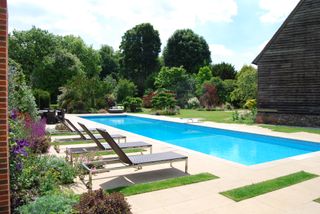
A swimming pool can seem like an attractive prospect, especially when you find yourself in the midst of a summer heatwave. However, as you can imagine, investing in a swimming pool, whether indoor or outdoor, is no small commitment.
Not only do they take up a lot of room, they're expensive to install and heat, and maintenance on a poor quality pool will leave you with a potential headache that's unusable for large parts of the year.
In our guide to swimming pools, we'll cover all the crucial elements from installation and running costs, how to heat your pool and this most important question of all: how much will I actually use my swimming pool?
Indoor Vs Outdoor Swimming Pools
While there is little doubt that an indoor pool is viewed as an asset to a house that can comfortably accommodate it, in our temperate British climate an outdoor pool is often considered something of a nuisance — a blight to an otherwise attractive garden, as opposed to a selling point.
Future buyers may well take into account the cost of removing it — potentially devaluing the property. However, this depends greatly on the pool in question as modern construction methods can eliminate a lot of the risks.
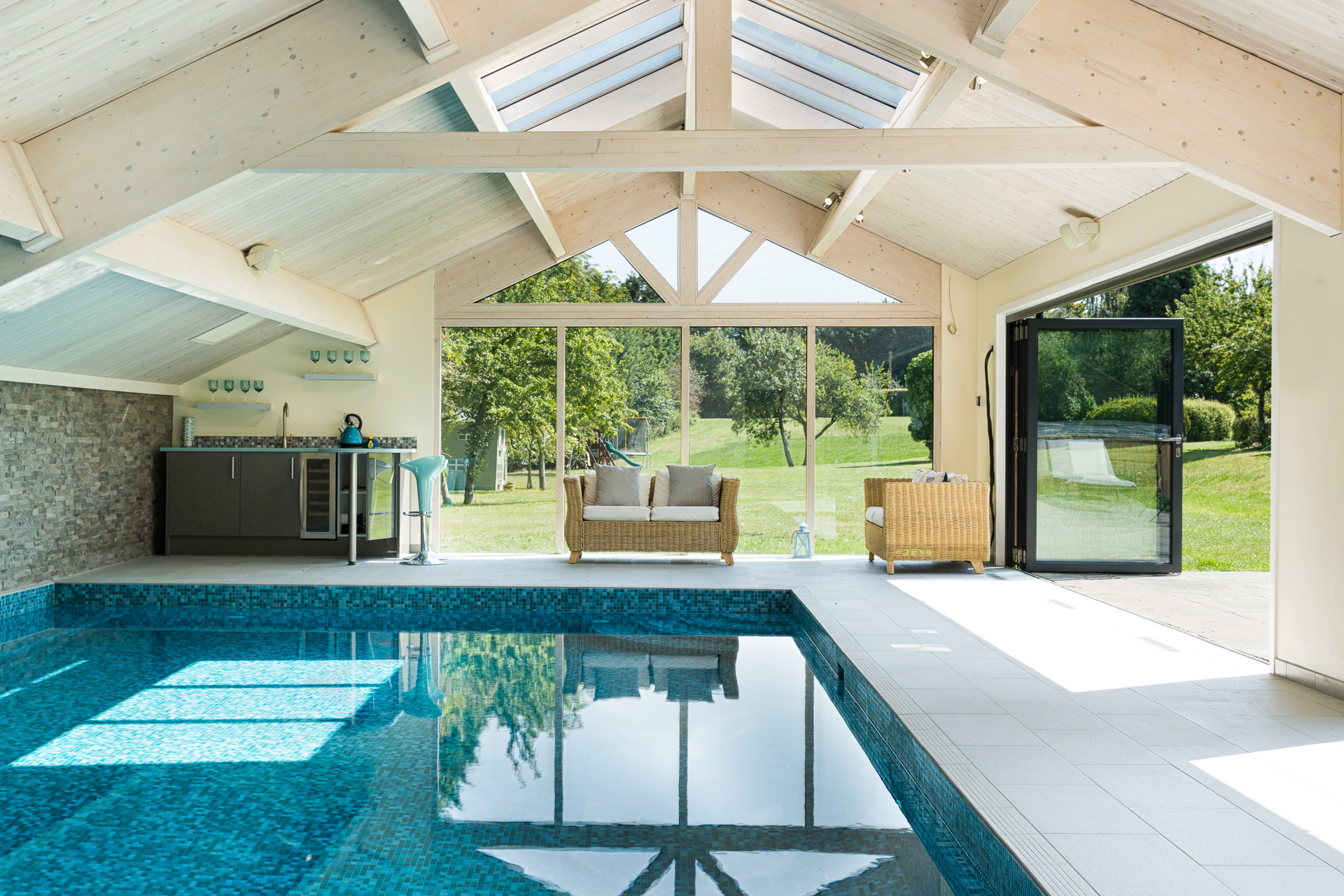
How Much Does It Cost to Install a Swimming Pool?
The cheapest solution is an above-ground outdoor pool, which costs from around £2,500 for a 24 x 12ft model. A competent DIYer could install one themselves, though it will do nothing for the value of the property. It is, however, easier to remove than an in-ground pool.
For DIY enthusiasts, self build in-ground kits start from around £5,000 (excluding additional building materials and machinery hire), but you will require some building knowledge to install one.
If paying a professional to install, you'll need to consider the costs of excavation, soil away, building materials such as concrete and blockwork, and any specialist labour such as screeding. Costs of the labour will depend where you are in the country.
Most professional installations on a typical 11m x 4m pool, that includes all groundworks and materials with a good selection of renewable energy options, a good warranty and safety cover start from £50,000 with the average being around £80,000.
At the lower end of the outdoor pool market, a customised in-ground liner kit installed by a professional starts at £25,000 and a mosaic tiled concrete pool costs from around £45,000.
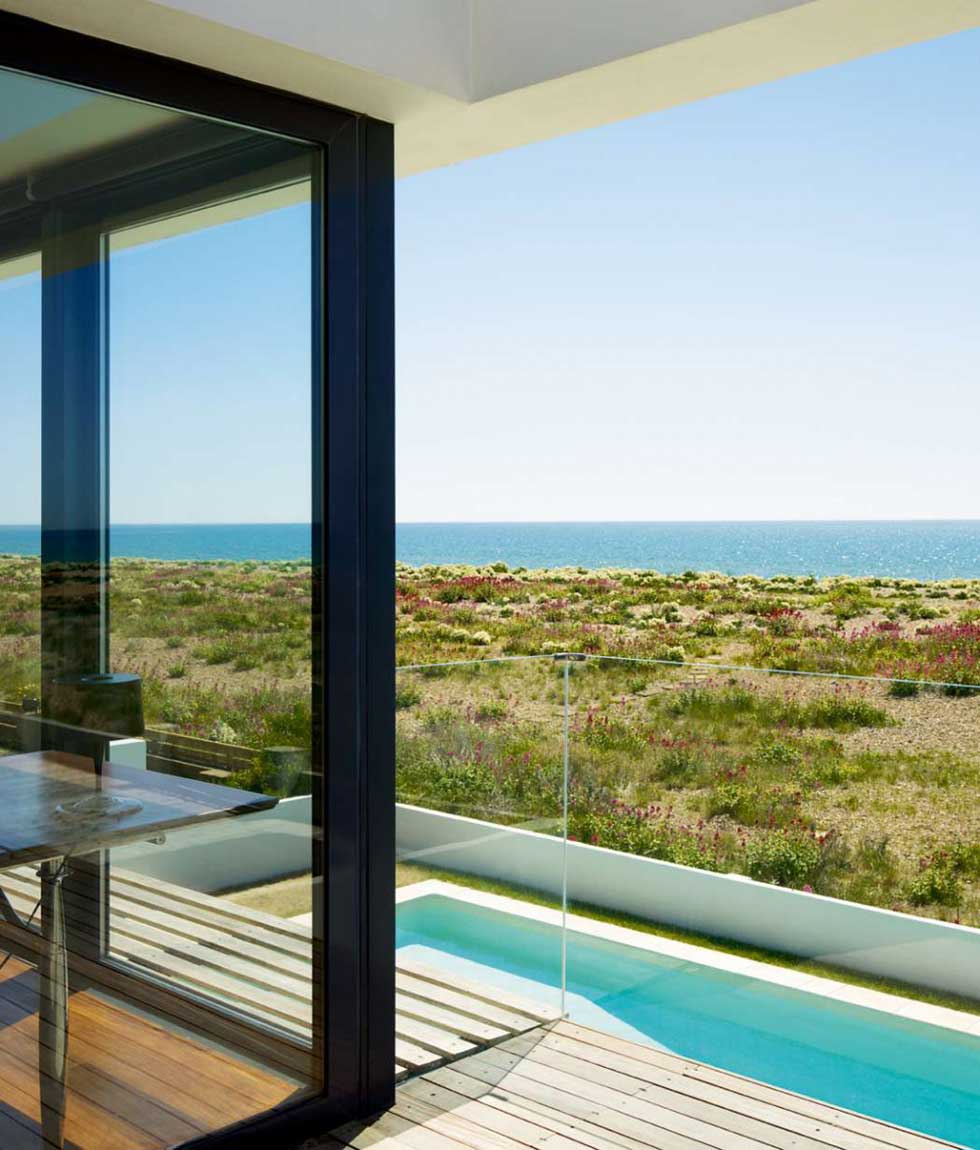
At the higher end of the market, a retailer such as Origin Pools will install a in ground outdoor pool from around £100,000 for a small pool up to £187,000 for a 15m x 6m pool. This includes installation and an air source heat pump for use between May and September.
Prices for natural swimming pools are better measured per m2, as the cost decreases as the size does. This will range between £300 to £600/m2
When it comes to indoor pools, prices vary greatly, from around £60,000 to £150,000 all-in (to include an environmental control system or air handling unit such as a dehumidifier), depending on the chosen pool. When budgeting for an indoor pool you also have to consider the cost of the building itself, very similar in cost to an extension. Typical costs range from £1,000/m² upward depending on the quality of the finishes and spec. Origin Pools offers indoor swimming pools including the building for guides prices of between £250,000-£405,000.
For those on a tighter budget, sliding dome covers offer the best of both worlds giving you an indoor pool that can be turned into an outdoor pool just like a convertible car.
Do I Need Planning Permission for a Swimming Pool?
Outdoor pools don't need permission, unless the house is in a Designated Area or is a listed building. An indoor pool may need planning consent, but not if it falls under Permitted Development. Check with the local authority.
How Much Will I Use a Swimming Pool?
One of the biggest worries that potential swimming pool owners have is how much use they will get out of it. It's a significant sacrifice in terms of cost and garden space so you'll need to be sure that you'll be enjoying it to the max.
Of course, if you're building an indoor pool, it's not an issue, but for outside pools – which form the overwhelming majority – you will also be governed by the seasons. "Outdoor pools are mainly used from late March until the end of September, but we have customers who swim all year round, especially those that heat their pool up for a Christmas dip, with the steam rising up," says Alex Kemsley from Compass Pools.
Largely, your ability to use it depends on your willingness to heat it — but unless you're investing significantly in an energy-efficient system (perhaps linked to a ground source heat pump) or are willing to spend a fortune on heating it conventionally, you will have to accept that it is going to be lying dormant for at least half of the year.
What Size Should my Swimming Pool Be?
Swimming pools come in a variety of sizes and the temptation is to try and economise on size to minimise costs. The smallest is usually 6 x 3m but as that requires little more than a handful of strokes to tick off a length, you might find it a little frustrating. At this size, most customers install a swim jet or counter current to allow their pool to be turned into an 'endless pool' — sort of like a treadmill for swimming pool.
The standard is actually 11 x 4m (x 1.5m deep), with most companies offering a larger size off-the-shelf (although most will create bespoke sizes if you insist). This size gives a nice balance of usability and running costs, as the bigger the pool the more water to heat. You will, of course, need extra space around the pool of about 2m — plus associated space for a plant and filtration kit.
What's the Best Way to Heat a Swimming Pool?
Swimming pools require a significant amount of energy to keep warm. Pool heaters look a bit like boilers and can run off oil, electricity or gas. Some modern systems will use air source heat pumps to extract energy from the air. You can expect up to 5kW from 1kW of electricity.
(MORE: Heat Pumps for Swimming Pools)
When choosing a pool shell — be it concrete, liner or one piece — it's worth considering the long-term running costs as a little investment early on in an efficient pool shell and cover, can pay dividends in the long run.
One of the problems is that, unlike an enclosed space, the pool will lose heat just as soon as it gets up to the required temperature (usually 26–30°C).
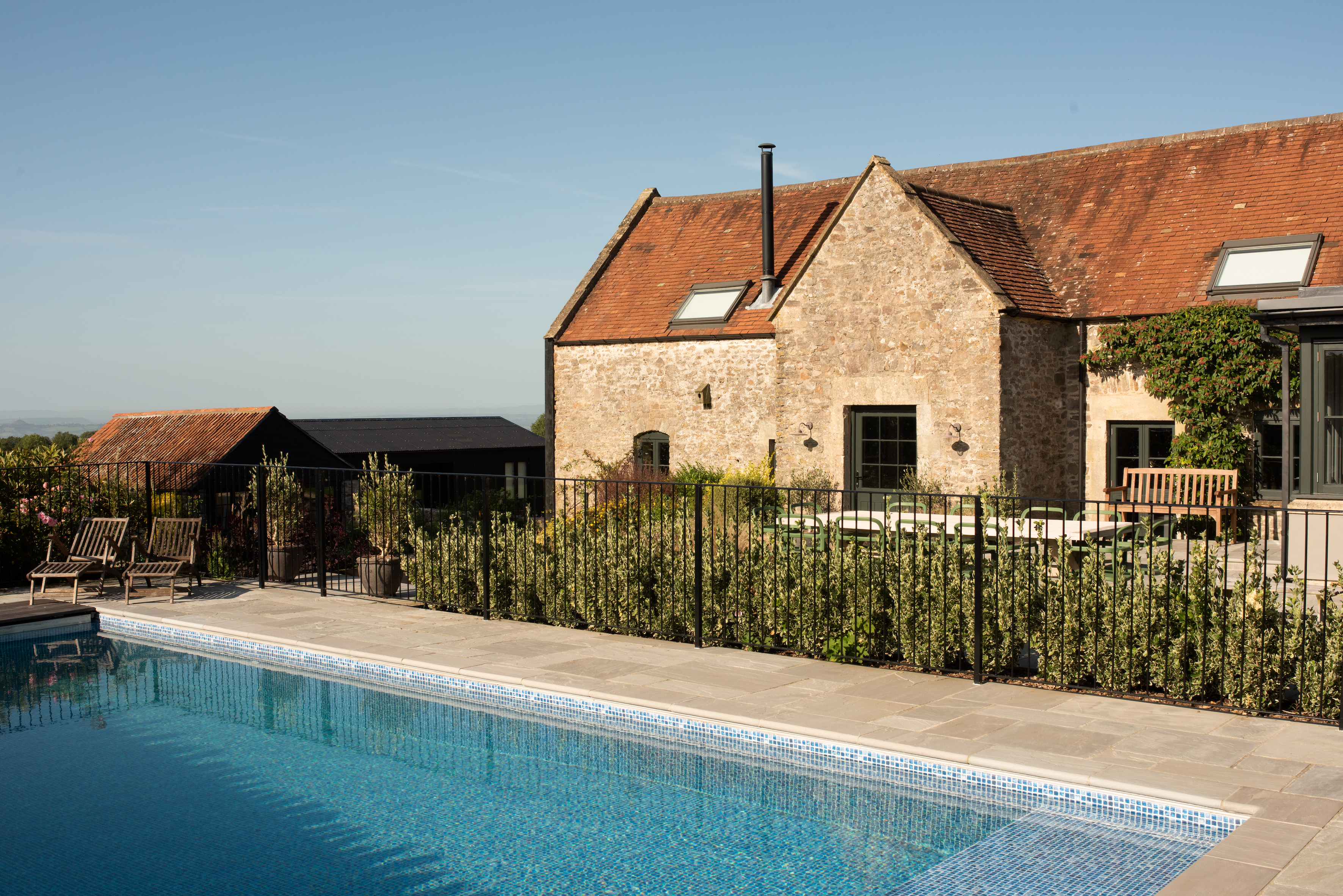
"Most of our customers opt for an air source heat pump, with typical running costs of just £5 per day in summer, for a 11m x 4m insulated carbon ceramic pool," says Alex from Compass Pools. For those looking to go a step further, investment in a super energy-efficient system (perhaps to linked to a ground source heat pump) with a solar cover could expect even lower running costs.
Traditionally, when not used, a solar and debris blanket covers the pool to minimise losses (around 80 per cent of a pool's heat escapes through the surface).
The clever option is to invest in some form of renewables setup, which runs through a heat exchanger to heat the water. Using a solar thermal array makes sense, as the pool will be heated well on the sunny days when you really want to use the pool.
Another option is to use biomass boiler (linked to a heat store). For these more complex solutions you'll need specialist advice, but the significant investment is usually well worth it.
How Much Maintenance Does a Swimming Pool Require?
Because heat breaks down chlorine, the key job is really one of topping up and checking pH and chlorine levels. The good news is that the maintenance jobs are fairly routine — there are even apps that will help you monitor pH and temperature levels and you can buy automatic dosing systems.
If you hate the thought of using chlorine, then you can install a pool salt system or look to modern treatment alternatives such as Ionisation, ultra violet and active oxygen.
How is a Swimming Pool Installed?
Top Tip
Pool companies factor in the weight of water as a counterbalance against the walls caving in, so an empty pool is a structural risk.
There are essentially four ways of building a pool. Most common is the traditional block and liner technique, which, as its name suggests, consists of masonry blocks and a vinyl liner (the liners usually have a lifespan of around 5–10 years).
Secondly, a gunite shell — which is made up of a steel mesh frame onto which shotcrete or gunite is sprayed — is finished with a waterproof render and tiled. Thirdly, a polyethylene preformed shell is used.
And finally a more recent development, the carbon ceramic shell. This uses technology from the aerospace industry to deliver an energy efficient pre-made shell ready plumbed and all fitted out to your specification — bit like ordering a car.
The techniques get progressively more expensive but are also quicker to install, less prone to failure (cracking and liner failure being the two killers for the outdoor swimming pool) and more efficient to run.
When employing a pool installer, make sure they are a member of SPATA (the Swimming Pool and Allied Trade Association). This means you will automatically be protected against them being unable to complete the contract, and will have warranty insurance cover.
What are the Running Costs of a Swimming Pool?
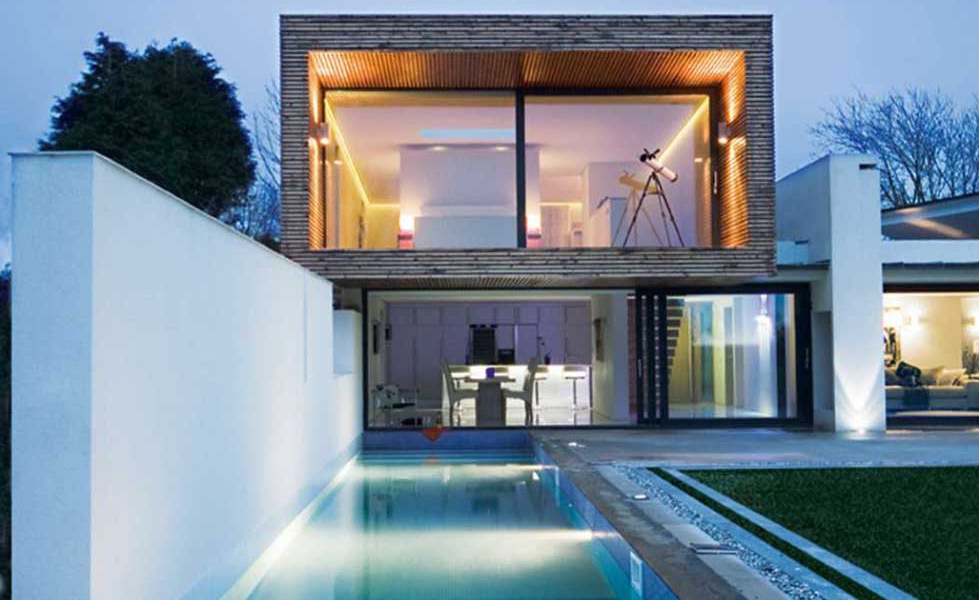
The running costs of a swimming pool depend on your choice of heating system. While an electric system is lower cost initially than a heat pump, it will cost far more to heat your pool in the long run.
Keeping a swimming pool heated is the largest obstacle to overcome, as any pool will loose heat from the surface, but especially outdoor pools. To work out the cost of electricity, look at the surface area in square meters, Use 200W per square metre for an exposed outdoor swimming pool to around 50W if the swimming pool is in a protected location with a good thermal cover. Keeping the air in an indoor pool building warm will help to reduce air heat loss, but this has its own heating implications.
Compass Pools estimate an average running cost of 50p per hour for a swimming pool heat pump, which will likely run at anything from 4 hours to 8 hour a days, meaning daily running costs of around £5 a day in summer and £10 a day if using year-round for heating plus chemicals. You will also have to pay for necessary repairs.
Does a Swimming Pool Add Value to a Property?
It's a tricky one. "If pushed, I would have to say that it doesn't usually add anything to the value," says Liz Lord from Worcestershire estate agents Allan Morris & Jones.
"Unfortunately, the ones I do see tend to be poorly maintained, and potential buyers worry about the heating costs, too," she explains. "I'm afraid the perception is that we don't have the summers to make the most of them, and in my experience they are less fashionable than they were."
For a certain market, however, it's a different story. Justin Godfrey, from Savills' Bishops Stortford office, comments: "Once you reach the above £3m mark, there's an expectation that certain things will already exist in the sale, and a pool, be it indoor or outdoor, is high on the buying criteria.
"If the property sits in the countryside with a certain amount of acreage, then a swimming pool would be almost essential to achieve a maximum price. If there is no swimming pool, then buyers looking for such a property as their main residence, are likely to be factoring building costs into the overall sum."
If you are building an integrated indoor pool at the same time as a house, then it is largely VAT free, if part of your overall build.
(MORE: VAT on a New Build)
How Do I Keep a Swimming Pool Safe?
Safety is a huge issue, but with a sensible approach it can be built in to the installation, and risk — while never entirely removed — can be minimised.
"I can't remember the last time we installed a pool without a safety cover," says Alex Kemsley from Compass Pools. "They are a fair investment starting at £10,000, however they can save a life. They also make life a lot easier as the pool is opened at the touch of a button, dirt is kept out and heat is added by turning the entire pool into a big solar panel."
Your safest bet? A 4ft-high locked (and alarmed) fence around the pool with an automatic safety cover and rescue equipment nearby. It's also worth checking out a French-standard pool alarm (from around £500), which protects the perimeter of the pool using infra-red technology — a bit like a burglar alarm.

The former Editor ofHomebuilding & Renovating magazine, Jason is an experienced self builder and has just finished renovating a 1960s home. He is also the author ofThe Self Build Dream. You can catch Jason in the seminar theatres and Advice Centre at many of the Homebuilding & Renovating Shows across the UK.
How Much to Put in a Swimming Pool Uk
Source: https://www.homebuilding.co.uk/advice/swimming-pool-guide
0 Response to "How Much to Put in a Swimming Pool Uk"
Post a Comment